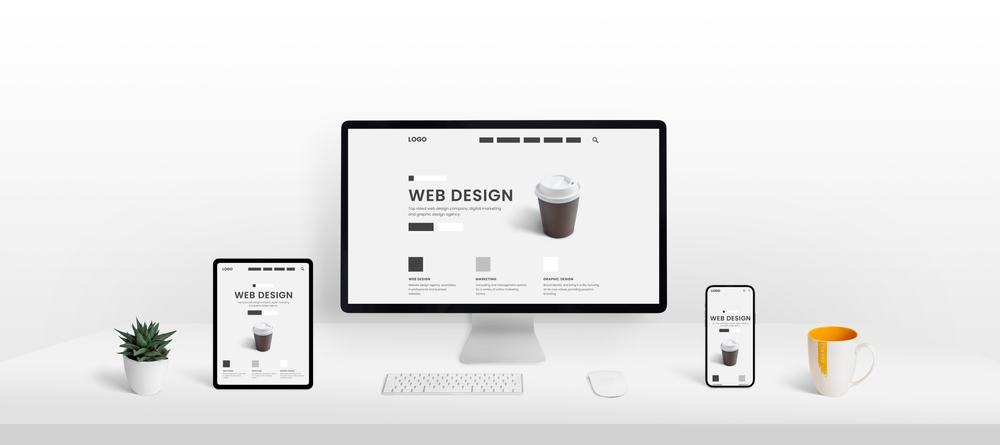Since July 2018, Google has taken page speed into account for all searches (previously, it was only considered for desktop searches). A slow website disadvantages you and can push you off of the cherished first page.
There is good reason for this.
One study showed that 53% of mobile visitors will give up on a page that takes more than three seconds to load. Page speed affects user experience, and factors that affect user experience affect ranking.
A slow website can be the difference between success and failure in a world where most people start their search for a product or service online.
Why Page Speed Matters
Let’s drill down a little further into why page speed matters. We’ve already mentioned search engine ranking and people abandoning pages remarkably quickly, but page speed also impacts a variety of other metrics that reflect on conversion:
User retention.
You don’t just want people to visit your site, you also want them to stick around. The BBC did an internal study and discovered that for every extra second spent waiting, they lose 10% of visitors. Frustration with slow speed increases over time and causes people to go elsewhere.
Bounce rates.
The bounce rate is the number of people who load one page on your site and then leave. Keeping your bounce rate down increases your conversion rate.
Improved conversions and advertising revenue.
A load time of fewer than 5 seconds can double your ad revenue as well as significantly boost your sales.
Users can be in a hurry.
For certain industries and uses, especially healthcare, a user may be in a hurry to get information or find a service whilst dealing with a crisis. Nobody wants to wait a second longer than necessary if somebody is sick or their bathroom is flooding.
Page speed can make a huge difference to your business’s success.
Which Page Speed Metrics are Most Important?
Page speed is measured by a number of metrics, such as TTFB (time to first byte). Sites such as Google’s PageSpeed Insights will test the speed of your site and give you a complex list of metrics, so it’s important to isolate the ones that matter the most. Some of these metrics are complicated, but there are three simple metrics to consider:
- Time to first byte, which is how long it takes for your web server to respond to the request.
- Average request count, which is the number of pieces of content displayed on the page.
- Average speed index, which is how quickly the mobile page displays its content.
All of these need to be as low as possible. At the technical level, you need to worry about metrics including how long the largest piece of content (generally an image) takes to load. These are opaque to users, but are components of the metrics above.
The average request count is kept down by keeping your pages simple, especially on the mobile version of your site. (Always make sure that your site loads the correct version for the device used to access the site.)
9 Ways to Improve Your Page Speed

So, how can you improve your site’s page speed?
First of all, you always start by running a speed test; this will tell you where the bottlenecks are.
The most obvious tool to start with is Google’s Pagespeed Insights
However, there are some factors that almost any site will benefit from.
1. Start with a good hosting provider.
When choosing your web host, look at its speed. Look at other sites hosted by them and compare the user experience. Some servers are simply faster than others; sometimes this can be a balancing act with the cost.
If you are self-hosting, make sure your server has enough power to handle your expected bandwidth.
If you are using WordPress, get managed WordPress hosting. Make sure that your provider does not limit your use of speed-improving plugins.
2. Improve caching.
Every web page on your site has coded elements or files that take time to get sent to the user.
Caching is the process of storing frequently used content in local memory, such as headers and footers, in a cache, or temporary storage location so that they can be accessed more quickly.
Caching improves page speed by not having to recreate these files for each user over and over.
If you are using a CMS, there are plugins that ensure that your site caches properly. If not, talk to your web designer about making sure that your site does correct caching and does not send large images and other resource-heavy elements multiple times.
3. Optimize images.
Large images can make your site pop, but will slow it down. Image optimization as it pertains to page speed is all about image compression.
Image compression is where you minimize the pixel density and size of a graphics file without compromising and degrading the quality of the image to an unusable level.
Image optimization can be done using image editing software like Photoshop, as well as using compression plugins (WP Smush works well) in your CMS.
4. Avoid Data Heavy Media Formats
Avoid using GIFs. GIFs will slow your site down substantially (and can sometimes cause accessibility issues). If you must have animation, use a video format instead.
When choosing image formats, PNG formatting is ideal for logos and branding elements.
That said, JPEG is a better choice than PNG for balancing quality and image size.
So whenever possible, use JPEGs as the image format of choice.
5. Use lazy loading.
Lazy loading identifies images and videos that are off-screen (below the fold) and delays loading them until the user starts to scroll.
By not loading every image or video at once, the critical elements of the page load much faster. This may cause fast-scrolling users to see a placeholder image, but it means that you are not loading images that some users may never actually see.
6. Audit & Compress Your CSS.
Have your developer go through your site and make sure that every piece of CSS on it is actually needed. CSS delays rendering significantly.
7. Audit & Compress Your JavaScript.
Same note here – make sure that you aren’t downloading a massive JS library, but rather only what is needed. Ideally, your site should be designed to use as little JavaScript as possible.
8. Minify text assets.
Remove comments, whitespace, and any other unnecessary content. It might not be much, but it adds up.
9. Make images responsive.
Use code to call an array of images so that huge images are not being loaded onto tiny phone screens, while desktop users get the full experience.
It’s also possible to have the server call WebP images for browsers that support them (WebP uses a lot less space) and JPG for those that do not. Ideally, the right image for the user’s device and system should be automatically called.
In Conclusion
Some of these you can do yourself, especially if you’re using WordPress or another CMS. Plugins exist to improve page speed in all kinds of metrics.
For others, you will need the help of your web developer and possibly your web hosting provider.
If you are looking to improve your current website’s speed or develop a new website that loads quickly, looks good, and is optimized for SEO, contact LocalBizGuru today.
We offer a variety of web and Local SEO services for small businesses across all industries.



